We live in the most toxic era in human history. Our food, water, and the products we use daily are saturated with harmful chemicals. From cosmetics to clothes and even the menstrual products we rely on, we're constantly exposed to endogenous toxins that cause diseases and mess with our genes.

In this article, let's uncover the dangers lurking in our daily products and the urgent need for a radical shift in our consumption habits towards healthier alternatives.
We live in fast-addicting goods, from clothes and cosmetics to home decor; everything has changed in the last 30 years. Getting quality garments made with natural fibers takes work! The pure wooden furnishers that last for years are gone (I've been struggling to get wooden furnishers)!
Exposure to toxins is causing multitudes of health issues like cancer, autoimmune diseases, asthma, skin issues, nervous system disorders, respiratory, hormonal, obesity, sperm reduction, and infertility, to mention a few.
Environmental toxins, especially plastic, are abundant in our daily lives, and some researchers suggest that we are becoming more plastic than humans.
Toxins in everyday products
- Industrial chemicals (products, air, and water)
- Plastic
- Cosmetics
- Parfumes and fragrances
- Candles and essences
- Cooking ware
- Clothing
- Female hygiene products (tampons)
Plastic
Plastic is the ever-present material in our daily lives! Look around you; do you see plastic? It's in;
- Packaging: Bottles, containers, bags, wrappers, blister packs
- Electronics: Phones, computers, TVs, chargers, cables
- Kitchenware: Utensils, cutting boards, storage containers, food wrap, and cookware.
- Personal care: Toothbrushes, combs, razors, shampoo bottles, makeup containers
- Household items: Furniture, toys, cleaning supplies, light fixtures
- Clothing: Synthetic fibers like polyester, nylon, acrylic
- Transportation: Car parts, bike helmets, tires
- Medical supplies: Syringes, IV bags, tubing, medical devices
It's crucial to be mindful of the pervasive presence of plastic in our lives and its potential to expose us to harmful chemicals and microplastics.
Here are a few ways you're ingesting plastic without knowing:
- Food packaging: Plastic wraps, containers, and bottles leach chemicals like bisphenol A (BPA) into food and drinks. BPA is an endocrine disruptor that interferes with hormone function.
- Personal care products: Many cosmetics, lotions, and toothpaste contain microplastics, tiny plastic particles that get absorbed through the skin. These microplastics accumulate in the body and potentially cause harm, especially when your liver can get rid of them.
- Synthetic fibers: Many clothing items are made from synthetic fibers like polyester, nylon, acrylic, and spandex. These materials are made from petrochemicals and coal. They break down into tiny microfibers during washing and wear. Microfibers are tiny microplastics.
- Water bottles: Plastic bottles can release microplastics into the water, especially if scratched or left in high temperatures like summer or in a heating car!
- Tea bags: Some tea bags contain plastic fibers that can end up in your tea when steeped.
- Seafood: Fish and shellfish can accumulate microplastics from the environment, which we then ingest when we eat them.
Long-term exposure to plastic chemicals and microplastics is associated with endocrine disruption, which means it interferes with hormone function and can lead to reproductive problems, developmental issues, and increased cancer risk.
Additionally, microplastics also cause inflammation, which will lead to immune dysfunction and may cause respiratory problems.

Toxic ingredients in cosmetics
It's now known that a woman (urban) generally consumes about 200 chemical compounds daily through her personal care products, makeup, deodorants, perfumes, skincare, and hair care- not to mention her nails!
Each of these products contains multiple ingredients, many of which are chemical compounds. Some of these chemicals are harmful to health. Since these chemical compounds get directly into the bloodstream, they can travel anywhere in your body, including the brain.
It's a harsh reality that some products targeted to Black women contain higher amounts of carcinogenic compounds compared to those designed for other populations. This disparity, known as environmental racism, has contributed to the high risk of uterine fibroids, infertility, early puberty, and endometrial and breast cancers in Black women.
Perfumes and frangrances
We all want to smell good, don't we? And the fragrance market is on the rise! However, perfumes and fragrances are sources of chemicals that get into your body.
Fragrances and perfumes contain:
- Phthalates: These make the scent last longer and cause endocrine disruption, reproductive problems, and developmental issues.
- Parabens: Are preservatives that can mimic estrogen and disrupt hormone function. They have been linked to breast cancer and other health problems.
- Formaldehyde: Is a preservative that can cause allergic reactions, respiratory problems, and cancer.
- Toluene: This solvent can be irritating to the skin, eyes, and respiratory tract and may also cause neurological problems.
- Ethanol: Is a type of alcohol that can be irritating to the skin and eyes. It can also cause headaches and dizziness.
The terms perfume and fragrance represent a mix of about 3000 chemical compounds, which the industry isn't obliged to list on the packaging!
I stopped wearing perfumes several years ago. After changing my diet to include more vegetables and fruits, I realized that my body odor changed, and I no longer need fragrances!

Not all perfumes contain these harmful chemicals. Look for products labeled "fragrance-free" or "unscented." Choose products made with natural ingredients, and consider using essential oils instead of perfumes.
Tampons and alternatives
Today, girls are getting exposed to toxins at a very early age! One reason is that young girls start their cycles way too early, at 11 years, compared to 16 years in the 1800s.
Tampons are made from cotton that is heavily sprayed with pesticides and may contain a high amount of lead from certain soils.
Chlorine is commonly used to whiten cotton. This process can introduce harmful byproducts like dioxins, which are known to be toxic.
Tampons can also contain fragrances!
The liver can not detoxify these chemical compounds since they're directly put into the uterus and can cause hormonal imbalances and painful periods.
Medical-grade menstrual cups and discs, period underwear, organic pads, and sea sponges are alternatives to tampons.
Candles and incense
Scented candles and incense make your house smell good and lovely, creating the ambiance of a cozy luxury hotel room! But are these conventional candles safe?
Most candles in the market today are made with paraffin wax, which releases toxic chemicals like benzene and toluene when burned. These chemical compounds, as you read up, can cause headaches, respiratory health problems, and even cancer!
Candles smell good due to their fragrances, which contain phthalates and other endocrine disruptors that can mimic hormones in your body, leading to potential health issues. They can also trigger allergies, asthma, and headaches.
When burned, candles and incense leach ultra-fine particles into the air, which, when inhaled, go deep into the liver and brain!
Candles and incense contain dyes that give them different colors. When burned, some synthetic dyes can release harmful chemicals.
Natural beeswax, soy wax, and essential oil diffusers are good alternatives to conventional candles, which avoid synthetic fragrances and fragrance oils.
What can you do?
- Prefer glass to plastic for food containers. If you must use plastic, do not heat or store hot food in plastic because the microplastics will leach into the food.
- Avoid coffee cups or disposable mugs because they're made with chemicals and contain plastic lining! Acidic beverages increase the amount of microplastics released.
- Opt for clothes made from natural fibers, and if you own clothes made from synthetic fibers, limit the number of times you clean them. This will reduce the emission of microplastic in the water!
- Choose natural and organic products, which may contain fewer chemicals and be less harmful to your health. Read labels carefully and avoid products with toxic chemicals, such as parabens, phthalates, and formaldehyde.

To sum up
As we've explored, the products we use daily, from cosmetics to clothing, harbor toxins that can significantly impact our health and the environment.
By making informed choices and opting for natural, non-toxic alternatives, we can reduce our exposure to harmful chemicals and create a healthier future for ourselves and future generations.
Reducing your exposure to these toxins, especially if you are suffering from a chronic disease, will assist your body in healing.
Eating nutrient-dense foods that can assist your liver in the detoxification process can also help you reduce the accumulation of these toxins.
You've the power to heal yourself, Githu.


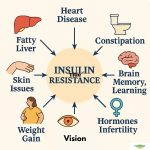
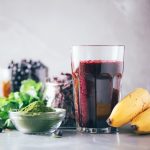
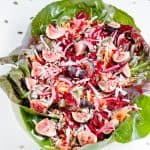


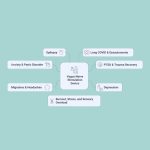

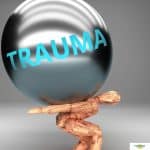








Comments
No Comments